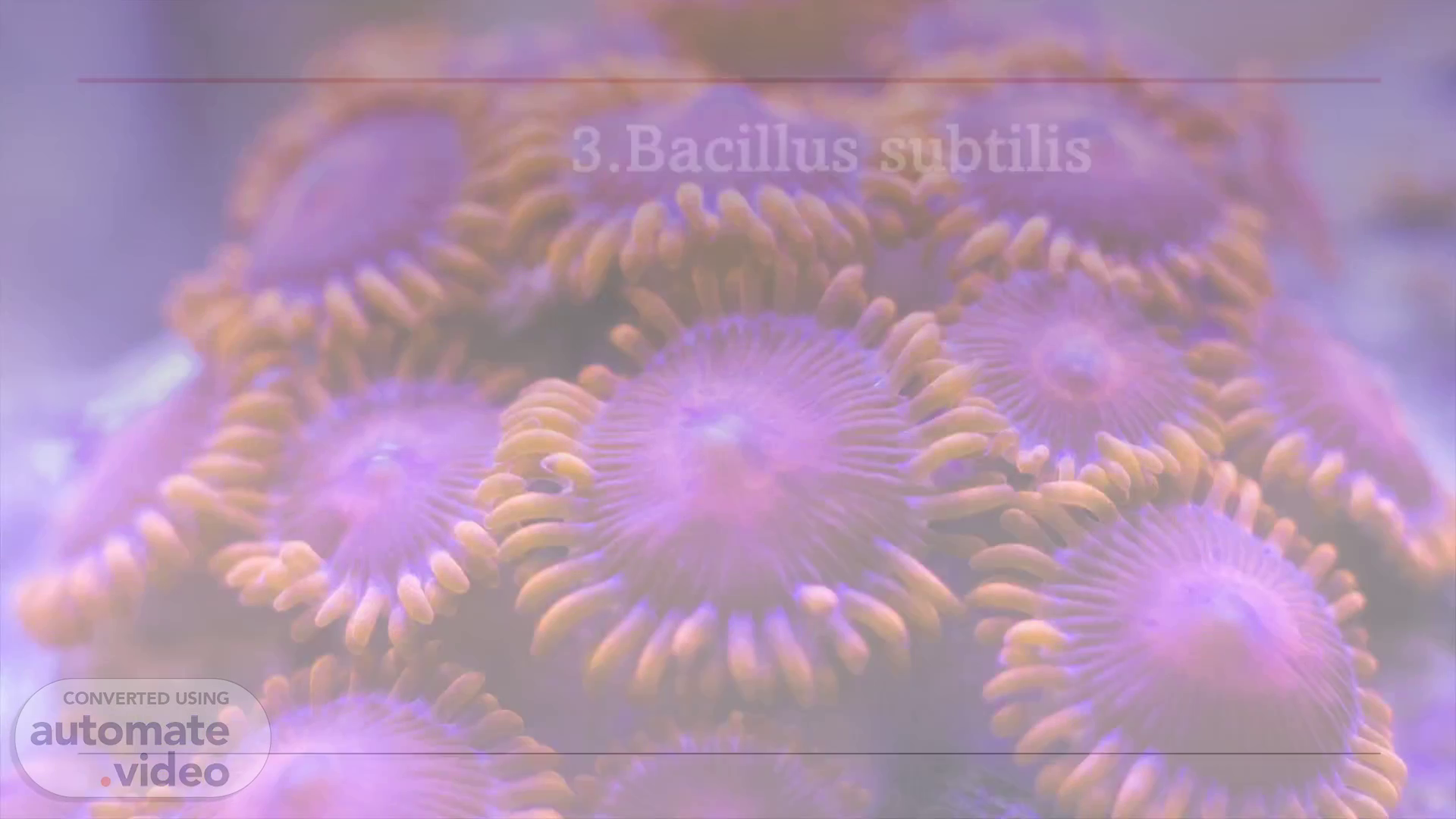Page 1 (0s)
[Audio] Good morning, everyone. Today, I am going to take you through a discussion of the bacterium Bacillus subtilis. We will cover its habitat, morphology, cultural characteristics, biochemical characteristics, host range, virulence factors, antibiotic resistance mechanisms, and epidemiology. Let's dive in..
Page 2 (23s)
[Audio] Bacillus subtilis is a gram-positive, rod-shaped microorganism commonly found in soil and other natural environments. It is popular in scientific research due to its ease of cultivation and genetic manipulation. Regarding its significance, the second slide specifically focused on this bacteria..
Page 3 (44s)
[Audio] Bacillus subtilis is commonly found in the environment, often in the soil, water, air, and gastrointestinal tracts of humans and animals. Known to adapt to various settings, this bacteria is both widespread and versatile..
Page 4 (1m 0s)
[Audio] Bacillus subtilis is a rod-shaped bacterium with a width of 0.5 to 1.0 micrometers and a length of 2.0 to 4.0 micrometers. Its ability to form endospores serves as an adaptation to survive in harsh environments, providing a high level of resistance..
Page 5 (1m 19s)
[Audio] Bacillus subtilis is a Gram-positive, rod-shaped bacterium belonging to the genus Bacillus. Its survival requires oxygen and it grows optimally in the presence of it. Colonies grown on nutrient agar or tryptic soy agar are semi-opaque, white or cream-colored, and have a smooth texture..
Page 6 (1m 40s)
[Audio] Bacillus subtilis is a Gram-positive bacterium found in various environments, including soil and the digestive tracts of animals. With a range of biochemical characteristics, it is a valuable microorganism to study. It is catalase-positive and oxidase-negative, meaning it can break down hydrogen peroxide, but cannot use oxygen for respiration. Furthermore, it can hydrolyze starch, produce catalase, and ferment sugars such as glucose and lactose. Additionally, it is capable of producing proteases, lipases, and other enzymes essential for nutrient acquisition..
Page 7 (2m 20s)
[Audio] Bacillus subtilis is a Gram-positive rod-shaped bacterium found in soil. It is not typically associated with human disease, rendering it non-pathogenic. This bacterium is often employed as a probiotic to improve digestive health in both animals and humans..
Page 8 (2m 39s)
[Audio] Bacillus subtilis does not have any known danger to humans; it does not possess the typical virulence factors for pathogens, and is not linked to any human illnesses..
Page 9 (2m 51s)
[Audio] Bacillus subtilis is a species of bacteria known to possess antibiotic resistance. Resistance can be acquired through mutations in target genes, decreased uptake of antibiotics, or increased efflux of antibiotics. Each of these mechanisms have been shown to contribute to the development of antibiotic resistance in this bacteria..
Page 10 (3m 14s)
[Audio] Bacillus subtilis, though not considered a pathogen, is still an important bacterium in the scientific world. Found in a variety of ecological niches, it can be used as a model organism to study how bacteria interact with their environment. Its unique characteristics further make it valuable for applications ranging from food production to bioremediation..
Page 11 (3m 38s)
[Audio] Bacillus subtilis is a species of bacteria that has not been associated with any human diseases, thus rendering it non-pathogenic. Its characteristics and capabilities can explain why it is not associated with any known diseases, making it important to study this species of bacteria..
Page 12 (3m 56s)
[Audio] In discussing Bacillus subtilis infections, immunological responses are of critical importance. As this bacteria is not linked to human disease and does not cause an immune reaction in healthy people, it is usually only diagnosed in immunocompromised individuals. To correctly identify the presence of this bacteria, medical personnel must isolate and spot the causative agent from blood or tissue samples..
Page 13 (4m 23s)
[Audio] Bacillus subtilis, referred to as hay bacillus, is a gram-positive bacterium found in the soil and on plants. It is generally harmless, though rare infections can happen in those with weakened immune systems. Diagnosis of potential infection may involve isolating and identifying the bacterium from blood or tissue samples..
Page 14 (4m 45s)
[Audio] Bacillus subtilis is a common bacterium found naturally in environment, non-pathogenic and often used as a probiotic. Although it does not pose any significant health risks, prevention of infections from this bacteria is not typically required. To maintain good health, it is advisable to avoid contact with any sort of contaminated environment or bad hygiene practices..
Page 15 (5m 10s)
[Audio] Bacillus subtilis is a gram-positive bacteria, found commonly in the environment. It is generally harmless, with treatments rarely necessary. However, it can occasionally be the source of infection..
Page 16 (5m 25s)
[Audio] Bacillus subtilis is an incredibly useful and beneficial microorganism. Its non-pathogenic nature and wide range of applications make it a valuable asset in scientific research and for digestive health. Although it is capable of developing antibiotic resistance, it is not considered to be a significant public health risk. Conclusion, thank you for your attention..
